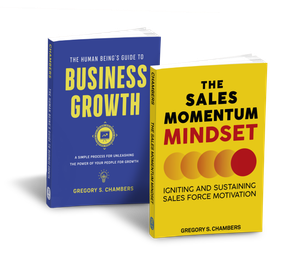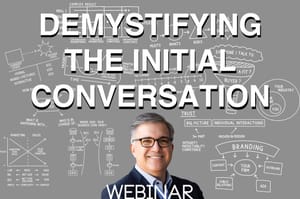Expand your definition of ROI
"What's the ROI?"

Quick thoughts on what has to be the most popular question I get once my proposal gets to the CFO.
"What's the ROI?"
(quickly followed by "What guarantees do you have?" - I'll address that one at some point. . .swear.)
I know what you're thinking, "Sure, it's convenient for YOU to say 'expand your definition'. . .you're trying to justify your services!"
Valid point, mon.
That won't stop me from walking you through this:
ROI in sales and marketing projects touches more than the top line.
Consider a few of these points next time you have to justify a spend in Sales or Marketing. Time, trust, testing and turnover.
- Quick note - Before I jump into these, let's make sure we're on the same page. You can't measure ROI on things you aren't measuring, right? If you have no measure in place for time, trust, testing or turnover, what follows will only help if you make an attempt to measure.
Time
I have first hand experience with the power of concentrated effort. I watched an entire company turnaround happen because an extremely effective manager was adept at getting everyone to focus on "one thing". (it wasn't me - I was strictly an observer that time) When you're determining ROI on a project, take into account the effect on your team's time.
Where can you measure time? There's the physical act of doing an activity but don't forget the mental aspect of having a task that should be done that you just can't get to. The weight of bits and bytes. "I want to get some White Papers out to our prospects because it would help us gain mindshare, but I just don't have time," is the kind of mental weight I'm talking about. The ROI shows up in job effectiveness.
Trust
There are a couple of places trust shows up. Trust from your customers and trust from your employees. We call one things like "customer advocacy" or "customer engagement" and the other is commonly referred to as "morale". Measuring customer engagement in ROI isn't new or all that innovative, but applying it to your most valuable asset is not as common.
Where can you measure Morale? That's a topic for another time but since you know my penchant for "start anywhere, go everywhere" I suggest a simple survey pre-project can give you a baseline and the survey can be repeated mid-engagement and post engagement. Far from ideal, it will still tell you a few things.
Testing
A good sales and marketing investment should improve your organization's R&D efforts. Especially if you've taken the time to figure out where the needle pivot will take place and what you want it to look like.
You are targeting a customer area for growth and if your R&D team is along for the ride, they will shorten their new product cycle and increase the adoption of those new products. Nice.
Turnover
This one can be considered as directly tied to morale, but it's one to look at on its own. Employees need to understand how a project can help customers and where they fit into that effort. Why? Because there's evidence that when employees are part of something bigger, they are happier. They stay with you. Turnover is reduced and that's something you measure, right?
I know. I know. The answer is Yes.
There are other ways to expand the definition of Return on Investment that don't begin with T.
The next Sales and Marketing project that comes around will be the perfect time to give one of these new measures a whirl.
Good stuff.
About the Author: Greg Chambers is Chambers Pivot Industries. Get more business development ideas from Greg on Twitter.




